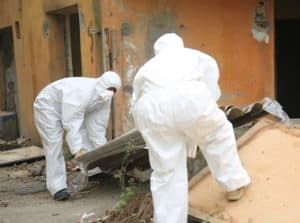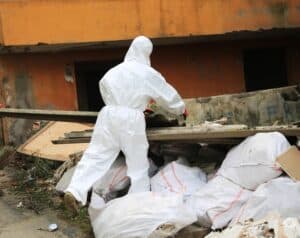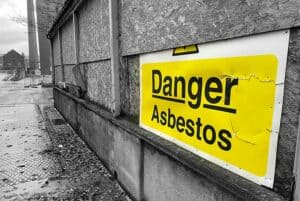Asbestos Sampling Versus Asbestos Testing – Which Do You Need? Explained By Bristol’s A4 Asbestos
Are you planning some alterations to your house – from major renovations to small cosmetic changes?
Was your house built before the year 2000?
Do you know the content of the building materials that you are planning to remove or alter?
During the 1940s – 1980s, it was very common that certain building materials used in the construction of residential properties contained chrysotile asbestos fibres, otherwise known as ‘white’ asbestos. Materials that can contain asbestos which were commonly used at this time include:
- Bitumen sink pads beneath steel kitchen sinks
- Cement sheets used to line walls and ceilings and floors
- Textured coating ‘artex’ finishes to ceilings and walls
- Vermiculite loft insulation
- Cement cold water tanks, usually in lofts
- Fire blankets
- Bath side panels
- Heat retention blocks in night storage heaters
- Cement corrugated roof sheets on garages and sheds
- Artificial roof slates
- Cement gutters and downpipes
- Cement boiler flues
- Gas boilers
- Fuse boxes
- Between cavity walls and beneath floorboards for loose fill insulation
- Vinyl floor tiles and the bitumen used to stick them to the floor
- Toilet seats and cisterns materials
- Insulating boarding used in fireplaces, partition walls, ceiling tiles
Unknown to them was the danger of using ‘white’ asbestos. Asbestos is responsible for the deaths of around 500 workers each year, and can still be commonly found in houses that were built or refurbished before the year 2000. When the materials that contain asbestos are damaged or disturbed through drilling, cutting or removal, even by simple repairs such as repairing a cracked flooring tile, the fibres are released into the air and then inhaled which can cause serious diseases. These diseases often take a while to develop so you will not notice you have been effected by the asbestos for a long time after the contamination, however, once you have been diagnosed it is often too late to treat the disease completely.
If you have any doubts about the content of the material and whether it contains asbestos or not, then the safest and the surest way forward is to take a small sample for testing in a laboratory to determine whether asbestos is present. We carefully take a small sample of the material, taking care not to disturb the asbestos fibres, and sent it to a UKAS accredited asbestos sampling laboratory where they analyse it to identify the type and percentage of asbestos present. We are able to visit your property to take samples and send them away to receive the results within 24 hours, to stop your project from being delayed. We offer sampling in and around the cities of Bristol, such as Swindon, Weston-Super-Mare, Well and Bath.
If your house does have asbestos, our team at A4 Asbestos are highly trained and experienced at removing asbestos from a wide variety of places in your home. From the roofing tiles to the gaps between walls, we can get into any gap or space that the asbestos is in. We work in accordance with HSE Asbestos guidelines to ensure that we work safely and cause no harm to the other individuals or the environment. We also transport, under a carrier’s licence that has been issued by the Environment Agency, the asbestos after the removal to a disposal point that is licensed to receive hazardous asbestos products.
If you would like to know more about our asbestos removal in Bristol, please contact us today on 0117 405 8678




